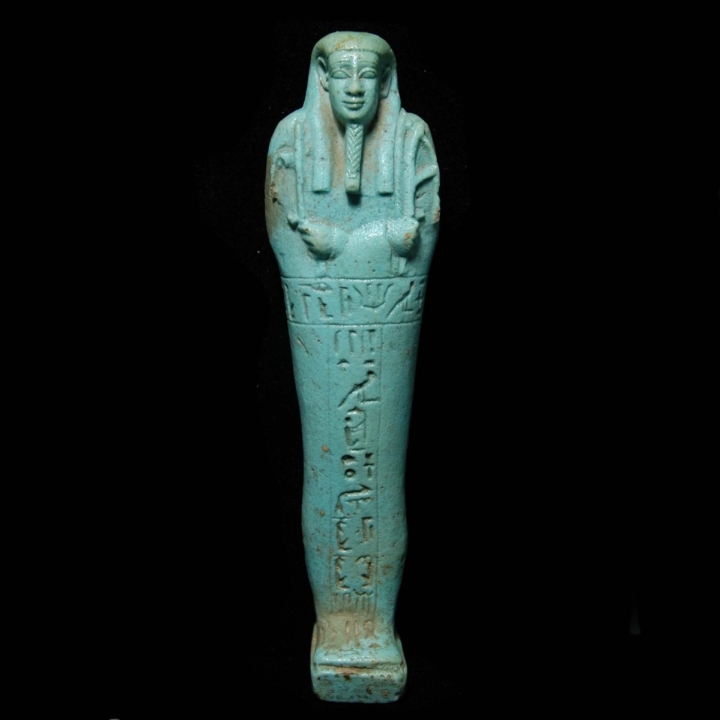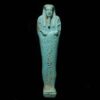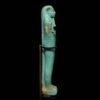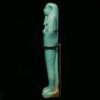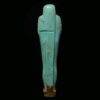Faience Shabti of the Priest Nesbanebdjed
Culture: Egyptian
Period: Late period, 30th dynasty, 380-342 B.C.
Material: Faience
Dimensions: 16.3 cm high
Price: Sold
Ref: 1415
Provenance: Swiss private collection, acquired in the 1980s from Galerie Faustus in Geneva.
Condition: A small darker area on the right upper arm and at the bottom of the back pillar and plinth. However, the figure is intact and beautifully preserved.
Description: Very finely worked out shabti from the tomb of the priest Nesbanebdjed, which was discovered in 1902. The mummiform figure of light blue faience with the arms crossed in front of the chest. In the left hand he holds the hoe, in the right hand the hand plow and the braided cord for the seed bag on the back. The shabti stands on a trapezoidal plinth and leans on a back pillar. The details of the face are finely worked out, the ears protrude from under the tripartite wig, the false beard is long and braided, the end slightly curled. Below the crossed arms the T-shaped hieroglyphic inscription sets in. The translation reads: "Nesbanebdjed, born to Shentyt, the ‘imy-khenty’ priest, the one who divides the two gods, the priest of Osiris in the Apet temple, the scribe of divinity, the overseer over the Wab priests of Sekhmet in Hat-mehit (Mendes), the priest of Banebdjed." In the tomb of Nesbanebjed 322 shabtis like this one with T-shaped inscription were found. Most of the shabtis remained in Egypt. The other ones are in private collections and museums. See for references the shabti in the Metropolitan Museum of Art in New York with the Accession Number 2021.41126, or the one at Sotheby’s auction on 10 December 2008, lot 4. For literature about the shabtis of Nesbanebdjed see J. F. Aubert and L. Aubert, "Statuettes égyptiennes, Chaouabtis, Ouchebtis", Paris, 1974, p. 125, "Reflets du divin: Antiquités pharaoniques et classiques d'une collection privée", Geneva, 2001, No. 73c, as well as G. Janes, "Shabtis: A Private View", Paris, 2002, No. 96. Mounted.



